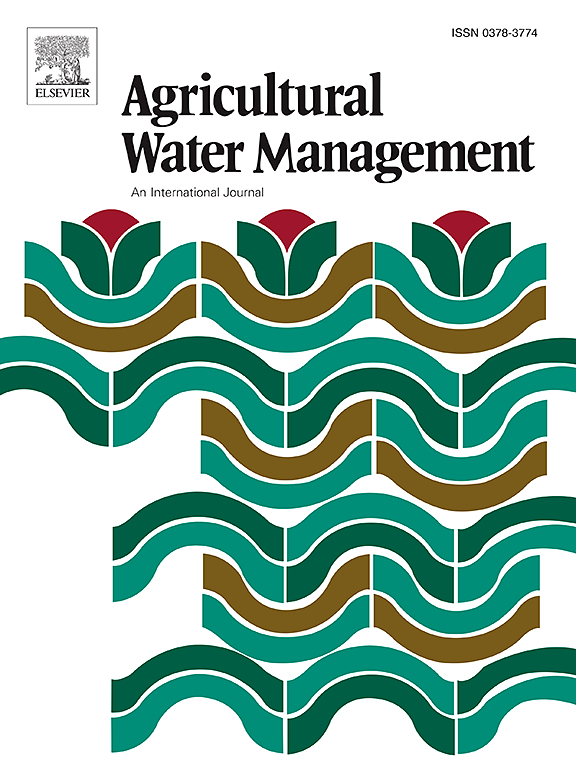对饱和缓冲区的成对现场评估表明,通过上游堰管理可以显著改善水质
IF 6.5
1区 农林科学
Q1 AGRONOMY
引用次数: 0
摘要
以往评价饱和缓冲带涵养排水实践的研究都以上游堰的流量作为控制,假设上游堰的管理不会减少流量和硝酸盐负荷。目标是:(1)调查上游堰是否具有控制排水(CD)的功能,以提供比缓冲流(BF,定义为分流到缓冲区的水)更好的水质效益,以及(2)评估高(浅)和低(深)堰管理水平下SB系统的性能。从2019年6月到2024年9月,我们在美国密歇根州的一个农场现场进行了配对研究,将SB系统与自由排水对照场进行了比较。利用这种方法,我们将SB系统的两个组成部分分离为CD和BF。结果显示,硝态氮负荷量显著降低(每年54.5%和11.1 kg/ha), p值<;与自由引流相比,SB系统降低了0.01)。CD组分成为硝酸盐- n负荷去除的主要贡献者(每年48.0%和9.6 kg/ha),证实了上游堰管理对水质的关键作用。忽略CD组分对水质影响的研究可能低估了SB的性能。BF组分对硝酸盐- n负荷减少的贡献仅为6.4%。高水平设置比低水平设置(0.036 kg/ha每日)显著去除更多的硝酸盐n(0.076 kg/ha每日)。综上所述,本研究显示了CD组分对水质的重要贡献,并强调了堰管理对提高硝酸盐负荷去除的重要性。本文章由计算机程序翻译,如有差异,请以英文原文为准。
Paired-field evaluation of a saturated buffer reveals significant water-quality benefits through upstream weir management
Past studies evaluating the conservation drainage practice of saturated buffers (SB) have used the water flowing over the upstream weir as a control, assuming that upstream weir management does not reduce flow and nitrate load. The objectives are to (1) investigate whether the upstream weir functions as controlled drainage (CD) to provide water-quality benefits beyond those from the buffer flow (BF, defined as water diverted into the buffer), and (2) evaluate the performance of the SB system under high (shallow) and low (deep) weir management levels. From June 2019 to September 2024, we conducted a paired-field study at an on-farm site in Michigan, USA, comparing an SB system to a free drainage control field. Using this method, we separated the two components of the SB system into CD and BF. Results revealed a significant reduction in nitrate-N load (54.5% and 11.1 kg/ha annually, p-value < 0.01) of the SB system compared to free drainage. The CD component emerged as the dominant contributor to nitrate-N load removal (48.0% and 9.6 kg/ha annually), confirming the crucial water-quality role of upstream weir management. Studies that ignored the water-quality effect of the CD component likely underestimated the performance of SB. The BF component contributed to only 6.4% of nitrate-N load reduction. High-level weir setting significantly removed more nitrate-N (0.076 kg/ha daily) than low-level setting (0.036 kg/ha daily). In conclusion, this study shows the significant water-quality contribution of the CD component and underscores the importance of weir management for enhancing nitrate load removal.
求助全文
通过发布文献求助,成功后即可免费获取论文全文。
去求助
来源期刊

Agricultural Water Management
农林科学-农艺学
CiteScore
12.10
自引率
14.90%
发文量
648
审稿时长
4.9 months
期刊介绍:
Agricultural Water Management publishes papers of international significance relating to the science, economics, and policy of agricultural water management. In all cases, manuscripts must address implications and provide insight regarding agricultural water management.
 求助内容:
求助内容: 应助结果提醒方式:
应助结果提醒方式:


